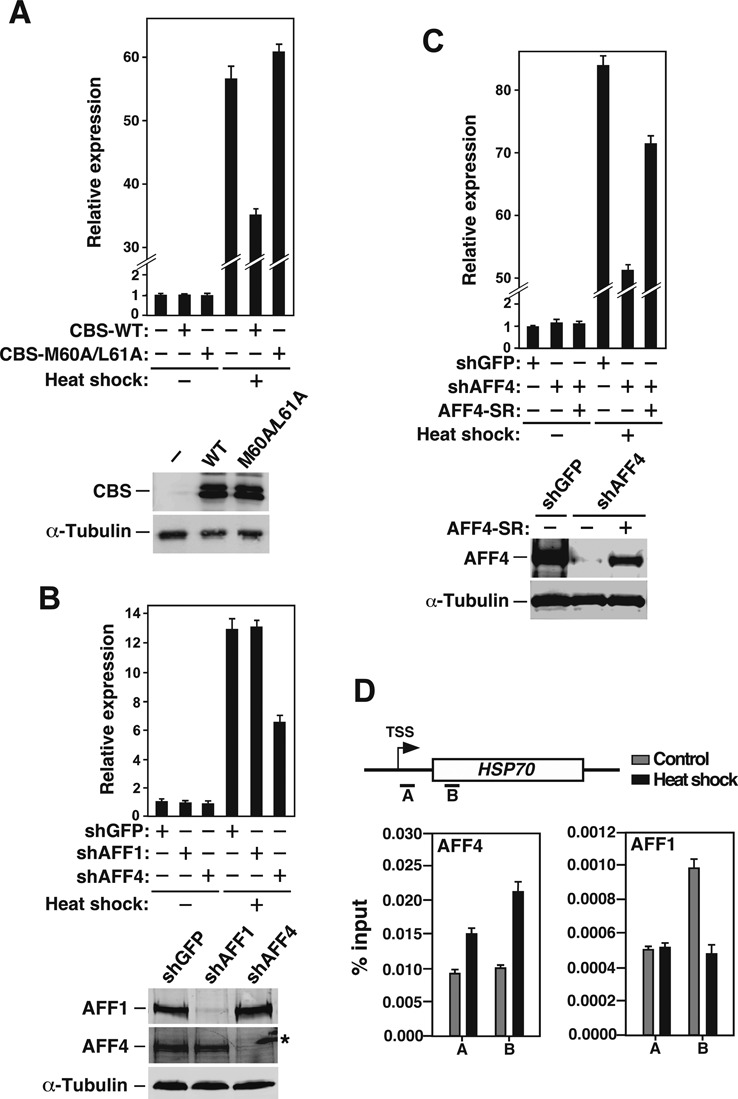Figure 5.

The AFF4-containing SEC is preferentially used during heat shock induction of HSP70 expression. (A) HeLa cells were transfected with either an empty (-) or the WT or mutant (M60A/L61A) CBS-expressing vector. Total RNAs isolated from either non-heat shocked (37°C) and heat shocked (42°C for 2 h) cells were subjected to qRT-PCR analysis to determine the levels of HSP70 mRNA relative to those of GAPDH, which was used as an internal control. The level in non-heat shocked cells transfected with an empty vector was set to 1, and the error bars represent mean ± SD from three independent measurements. The levels of WT and mutant CBS and endogenous α-tubulin were determined by western blotting (WB). (B) Heat shock-induced HSP70 mRNA production in cells expressing the indicated shRNAs was measured as in A. The levels of AFF1 and AFF4 in the KD cells were determined by WB, with the star (*) denotes the position of a non-specific band. (C) Heat shock-induced HSP70 mRNA production in cells expressing the indicated shRNAs and a shAFF4-resistent version of wild-type AFF4 (AFF4-SR) was measured as in A. The AFF4 and α-tubulin levels in transfected cells were determined by WB. (D) Top: genomic structure of the HSP70 locus. TSS: transcription start site. The small horizontal bars mark the positions of 2 amplicons generated by qPCR analysis of the ChIP DNA. Bottom: control or heat-treated HeLa cells were subjected to ChIP-qPCR analysis to determine the levels of AFF4 and AFF1 bound to the HSP70 locus. The signals were normalized to those of input; and the error bars represent mean ± SD from three independent experiments.
